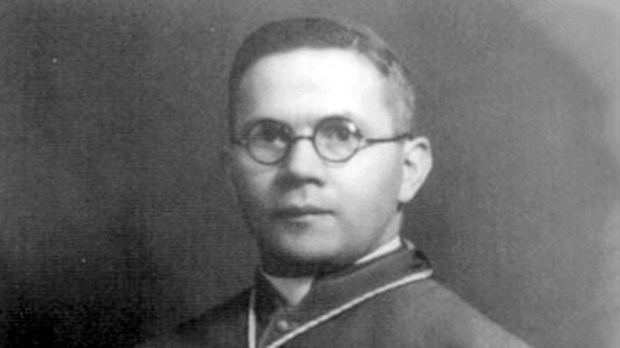The liturgical vestments worn by a Catholic bishop widely considered a martyr have been returned to the Church in Estonia.
The vestments had been worn by Eduard Profittlich at his consecration as a bishop in Tallinn in 1936, six years before his death in a Soviet prison.
Profittlich was a German-born Jesuit who served as Apostolic Administrator of Estonia from 1931 until his death. He was the first Catholic bishop in the Baltic nation since the Reformation.
But his service there was complicated by the start of the Second World War. According to Vatican News, the Soviet Union occupied Estonia in June 1940, ordering the expulsion of all ethnic Germans. Refusing to abandon his flock, Archbishop Profittlich decided to stay in Tallinn despite threats to his life. Profittlich was arrested on June 27, 1941, and sent to a Soviet prison camp, along with some 20,000 others. In Kirov prison, he died from exposure and starvation on February 22, 1942.
His cause for canonization has been introduced, and he could become the first Catholic saint from Estonia.
The newly-returned vestments are being stored at Saints Peter and Paul Cathedral in Tallinn. The bishop’s stole had ended up on the island of Saarema, according to the Estonian website ERR.
“Fortunately, we now found out that the stole was in Kuressaare, at the Saaremaa Museum,” said historian Toomas Abiline. “We asked for it back, and the museum was happy to return it. It has now reached Tallinn, where it is a relic in a very real sense as we have high hopes for the beatification of Eduard Profittlich.”
“All his belongings can be considered relics, including the stole he wore when he was ordained a bishop,” said Marge Marie Paas, postulator for his cause for canonization.
In writing the Positio on Profittlich, the paper detailing the life, spirituality, and martyrdom of a candidate for sainthood, Paas learned that Profittlich “wanted to build up a very strong Church in Estonia.”
The Church of his day was very small, consisting mostly of Germans, Poles, and some Russians.
“When he arrived in 1931, we didn’t have any Estonian-language prayer books. Even the Gospels were poorly translated,” she told Vatican News in August. “He wanted to proclaim the Word of God to all Estonians.”
Through 10 years of pastoral care, Profittlich was able to build up the Catholic community, overseeing the baptisms of many people and working closely with other Christian denominations, the Vatican site said. Paas credits the archbishop’s hard work for the fact that “we still have a very strong Catholic community in Estonia,” despite 50 years of communist rule.
The cathedral is planning to build a chapel in its crypt to honor Profittlich. There is already a museum there displaying Profittlich’s belongings.

